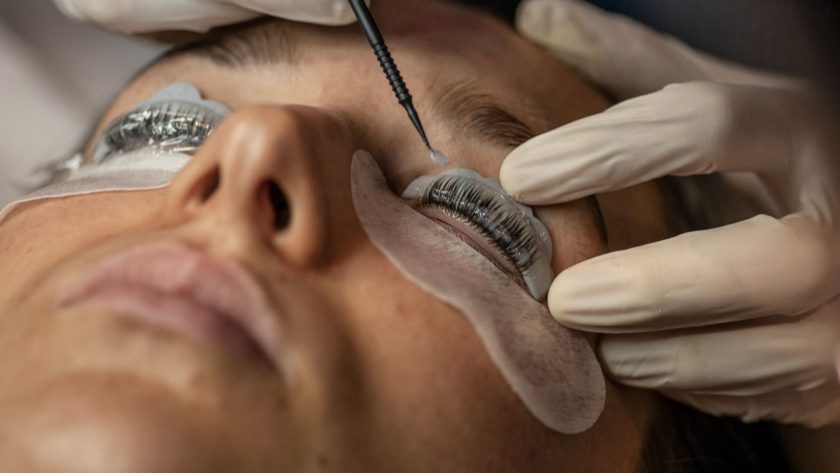Revolutionising eye beauty: advanced lash lifting techniques unveiled

Lash lifting is a beauty treatment designed to enhance the natural lashes by giving them a lifted, curled appearance. In the UK beauty scene, lash lifting technique has seen a surge in popularity due to its ability to provide dramatic results with minimal maintenance.
Kalentin offers lash lifting products designed to achieve stunning results while prioritising the health and safety of the natural lashes. From lifting solutions to silicone shields and nourishing serums, Kalentin provides everything needed to master the art of lash lifting and offer clients the perfect lash enhancement experience.
Understanding the basics of lash lifting
Lash lifting is a beauty treatment aimed at enhancing the appearance of natural lashes by giving them a lifted, curled effect. The process typically involves preparing the lashes by cleansing them, then applying a lifting solution to break down the disulphide bonds in the lashes. Silicone shields or rods are used to shape the lashes, followed by the application of a setting solution to lock in the new shape. Finally, a nourishing serum may be applied to promote lash health.
Common materials and tools used in lash lifting procedures include lifting solutions, silicone shields or rods, setting solutions, cleansing solutions, and nourishing serums or conditioners. These components work together to achieve beautifully lifted and curled lashes, enhancing the eyes’ appearance without the need for extensions or mascara.
Different lash lifting techniques and their effects
Lash lifting techniques encompass various methods, each with its own approach and effects on different types of eyelashes. Two common techniques are the silicone rod method and the shield method.
The silicone rod method involves using silicone rods of different sizes to lift and curl the lashes. This method typically offers more dramatic lift and curl, making it suitable for clients with straight or stubborn lashes. The rods are chosen based on the desired curl intensity, with larger rods providing a more pronounced curl.
On the other hand, the shield method involves using silicone shields placed along the eyelids to lift the lashes. These shields come in different shapes and sizes to create varying degrees of lift and curl. The shield method often results in a more natural-looking lift, making it ideal for clients seeking a subtle enhancement.
The effects of these techniques vary depending on the type of eyelashes.
For those looking to enhance their lash lifting results with high-quality tools and products, PLA Pro offers premium solutions designed for precision and long-lasting impact
The silicone rod method tends to work well for clients with straight or downward-pointing lashes, as it can provide a significant lift and curl to create a more open-eyed look.
On the other hand, the shield method is generally more versatile and can be adapted to suit a wider range of lash types. It is particularly effective for clients with shorter lashes or those seeking a softer, more natural-looking lift. Additionally, the shield method can help to lift and separate individual lashes, creating a fuller and more voluminous appearance.
Safety and precautions in lash lifting
Safety and hygiene are paramount in lash lifting to ensure a positive experience and minimise the risk of adverse reactions. Here are some key points to consider:
- Cleanliness: Always ensure that the work area, tools, and hands are thoroughly cleaned and sanitised before beginning the lash lifting procedure. This helps to prevent the spread of bacteria and reduce the risk of infection;
- Patch testing: It’s essential to perform a patch test on the client’s skin at least 24 hours before the treatment to check for potential allergic reactions to the products used. This involves applying a small amount of the lifting solution or adhesive to the skin behind the ear or on the inner forearm and monitoring for any signs of irritation or allergic response;
- Proper application: Follow the manufacturer’s instructions carefully when applying the lifting solution and other products during the lash lifting procedure. Avoid getting any products into the eyes or on the skin to minimise the risk of irritation or injury;
- Protective measures: Use protective eye pads or tape to cover the lower lashes and protect the delicate skin around the eyes during the procedure. This helps to prevent the lifting solution from coming into contact with the eyes and causing discomfort or irritation;
- Monitoring: Throughout the procedure, regularly check on the client to ensure they are comfortable and not experiencing any adverse reactions. If the client complains of discomfort or irritation, remove the products immediately and rinse the eyes with water;
- Aftercare advice: Provide clients with clear aftercare instructions to help them maintain the results of the lash lifting treatment and minimise the risk of complications.
By following these safety precautions and guidelines, lash technicians can help ensure a safe and successful lash lifting experience for their clients, minimising the risk of allergic reactions and other complications.
Aftercare and maintenance of lash lifts
After a lash lift procedure, it’s crucial to follow proper aftercare to maintain the lift and promote lash health. Avoid getting lashes wet or using oil-based products for 24-48 hours. Use a lash serum containing nourishing ingredients like peptides and vitamins to strengthen and hydrate lashes.
Gentle cleansing with a lash-friendly cleanser helps to remove dirt and debris without compromising the lift. Additionally, brushing lashes daily with a clean spoolie can help to keep them lifted and separated. Regular touch-ups every 6-8 weeks are recommended to maintain the lift and keep lashes looking their best.
Spotted something? Got a story? Email: [email protected]
Latest News
